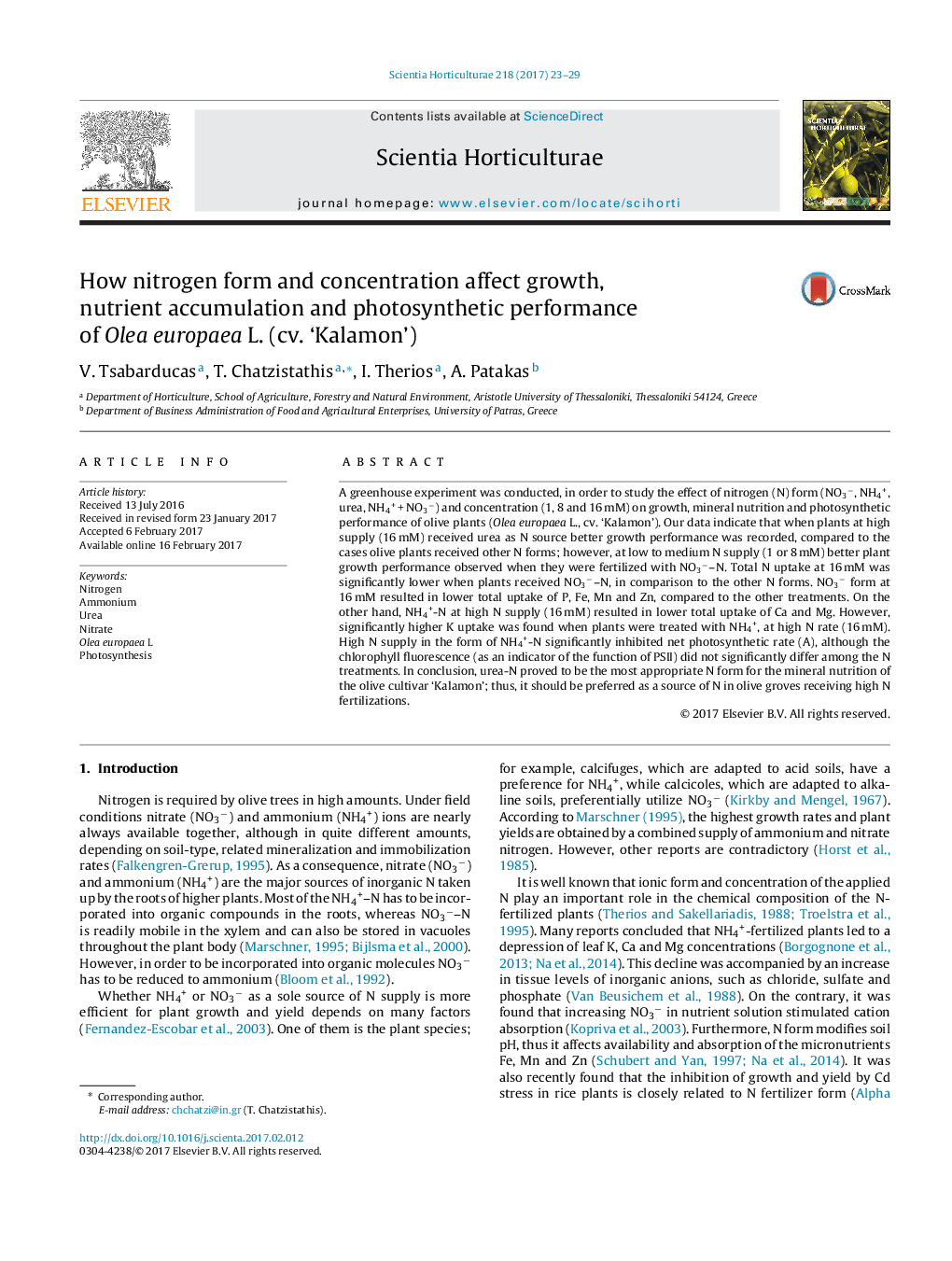| Article ID | Journal | Published Year | Pages | File Type |
|---|---|---|---|---|
| 5769523 | Scientia Horticulturae | 2017 | 7 Pages |
â¢Olive plants showed better growth when they received urea at high supply.â¢Plants showed better growth when they received NO3â at low to medium supply.â¢N form (NO3â, NH4+, urea, NH4+ + NO3â) influenced nutrient uptake by olive plants.â¢High N supply in the form of NH4+-N significantly inhibited net photosynthesis.â¢The most appropriate N form for the nutrition of olive cultivar 'Kalamon' was urea.
A greenhouse experiment was conducted, in order to study the effect of nitrogen (N) form (NO3â, NH4+, urea, NH4+Â +Â NO3â) and concentration (1, 8 and 16Â mM) on growth, mineral nutrition and photosynthetic performance of olive plants (Olea europaea L., cv. 'Kalamon'). Our data indicate that when plants at high supply (16Â mM) received urea as N source better growth performance was recorded, compared to the cases olive plants received other N forms; however, at low to medium N supply (1 or 8Â mM) better plant growth performance observed when they were fertilized with NO3â-N. Total N uptake at 16Â mM was significantly lower when plants received NO3â-N, in comparison to the other N forms. NO3â form at 16Â mM resulted in lower total uptake of P, Fe, Mn and Zn, compared to the other treatments. On the other hand, NH4+-N at high N supply (16Â mM) resulted in lower total uptake of Ca and Mg. However, significantly higher K uptake was found when plants were treated with NH4+, at high N rate (16Â mM). High N supply in the form of NH4+-N significantly inhibited net photosynthetic rate (A), although the chlorophyll fluorescence (as an indicator of the function of PSII) did not significantly differ among the N treatments. In conclusion, urea-N proved to be the most appropriate N form for the mineral nutrition of the olive cultivar 'Kalamon'; thus, it should be preferred as a source of N in olive groves receiving high N fertilizations.
